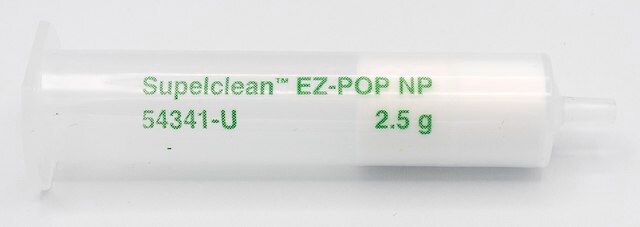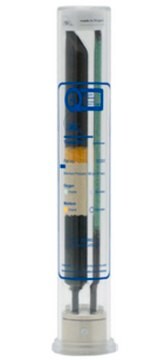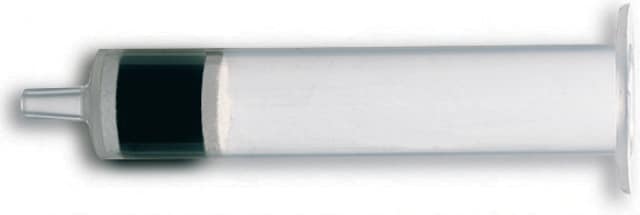54241-U
Supel™-Select SCX SPE Tube
bed wt. 60 mg, volume 3 mL, pk of 50
About This Item
Recommended Products
material
PE frit (20 μm)
polypropylene hardware
quality
MS Friendly
composition
bed wt., 60 mg
packaging
pk of 50
technique(s)
solid phase extraction (SPE): suitable
surface area
160-420 m2/g
volume
3 mL
matrix
Sulfonic acid functionalized hydrophilic modified styrene polymer particle platform
matrix active group
sulfonic acid phase
particle size
50-70 μm
pore size
80-200 Å pore size
application(s)
food and beverages
separation technique
ion exchange
Looking for similar products? Visit Product Comparison Guide
General description
Sample Matrix Compatibility: Aqueous solutions (biological fluids, water)
- Sulfonic acid functionalized hydrophilic modified styrene polymer
- Developed for the extraction of a highly broad range of compounds from aqueous samples
- Retention predominately based on ion-exchange; however, because the phase is hydrophilic modified, it is amenable to polar compounds as well.
View related article: Isolation and LC-MS Characterization of Illicit Bath Salts in Urine
Features and Benefits
- Excellent sample prep performance at a lower price
- Amenable to generic methodology - save time, money, and headache during method development
- Greater capacity allows for smaller bed weights = smaller elution volumes = time savings in sample processing
- Resistance to overdrying allows for more robust methdology
- Low UV and MS extractables for lower background and greater sensitivity
- Stringent production and QC guidelines offer greater lot-to-lot, tube-to-tube, and well-to-well consistency for improved accuracy and precision
Legal Information
Signal Word
Warning
Hazard Statements
Precautionary Statements
Hazard Classifications
Eye Irrit. 2 - Skin Irrit. 2 - STOT SE 3
Target Organs
Respiratory system
Storage Class Code
11 - Combustible Solids
WGK
WGK 3
Flash Point(F)
Not applicable
Flash Point(C)
Not applicable
Choose from one of the most recent versions:
Already Own This Product?
Find documentation for the products that you have recently purchased in the Document Library.
Articles
SPE retention mechanism in this case is based on the electrostatic attraction of charged functional groups of the analyte(s) to oppositely charged functional groups on the sorbent.
Protocols
To optimize hydrolysis using β-glucuronidase, factors such as incubation time, temperature, hydrolysis pH, enzyme source, and enzyme concentration must be evaluated for each glucuronide metabolite to be analyzed.
Retention occurs through polar interaction between the sorbent and analytes. Typical sample matrices that can be employed in normal-phase SPE include hydrocarbon or fatty oils diluted in a solvent like hexane, isooctane, chlorinated solvent, THF, diethyl ether, or ethyl acetate.
Our team of scientists has experience in all areas of research including Life Science, Material Science, Chemical Synthesis, Chromatography, Analytical and many others.
Contact Technical Service







